The Different Types of Egg Doneness
Posted on: May 29th 2019

Eggs are a nutrient-rich treasure that people eat in multiple ways. Because of their diverse usages, it gets complicated separating one cooking version from the others. One thing is definite — the degree of doneness matters.
What exactly is “doneness”? Doneness measures how much an egg is cooked. Based on the internal temperature and extent of the process, the eggs can result in a distinct interior and exterior. Apart from a particular taste and texture, the right degree of doneness can prevent diseases, too.
When prioritizing food safety, it’s important to keep in mind the cooking thoroughness. The appearance of an egg isn’t the sole indication, so you’ll need additional resources to figure out their condition. A reliable food thermometer, careful cooking steps and proper storage all help you attain the ideal egg doneness.
How Do You Want Your Eggs?

When you’re getting ready to whip up breakfast, it’s almost second-nature to ask, “How do you want your eggs?” However, if your guests request basted eggs, you might be left scratching your head.
Alternatively, you might be sitting down with your family at a restaurant as the server asks the same question. Aside from a basic scramble, you might be fuzzy on the rest of the styles. You probably have plenty of questions you’re ready to run by the server. “Is there a difference between over-easy and over-medium? Is there more than one kind of scrambled egg?”
With such a wide range of options, it’s important to specify your taste, or else you could end up with a runny egg when you’re in the mood for a stiffer texture.
The consistency of eggs you choose primarily comes down to cooking techniques, but they also branch out further. The approaches include boiling, frying and baking, which all produce unique makeups.
It’s no wonder they come in such a variety, because eggs are incredibly versatile. They suit many people’s preferences, so clarifying the cooking method you like is helpful. With the following guide, you can be prepared next time you hear the inevitable, “How do you want your eggs?”
Egg Cooking Methods
What ends up on the plate starts in the kitchen, and it’s crucial to pinpoint where doneness comes into play in the process. There are many ways you can prepare eggs in the kitchen. Heat from boiled water, steam or a buttered stove-top pan can give your eggs their shape and consistency.
The doneness of eggs changes from method to method, too. To equip you to notice the moment an egg is done, let’s review what the course of action looks like for each type.
1. Hard-Boiled Eggs
With the shell still intact, hard-boiled eggs are a simple technique. They’re heated longer than other types to solidify the center for a delicious effect.
After placing eggs in a pot, cover them with at least an inch of water. You’ll boil them for around 10 to 15 minutes to form the harder interior. The internal temperature should be more than 160 degrees Fahrenheit when you remove them from the stove.
Dunk the eggs in cold water right after they’re finished cooking, then drain the water. You can begin peeling them to test out their tasty, dense yolks or save the de-shelling for later.
When properly cooked, the white and yolk should harden, and the inside should be firm rather than rubbery. An overly hot batch of water or overcooking can give the yolks a green tinge.
You can store the eggs in their shells or peeled. While hard-boiled eggs are solid, they have a limited shelf life. Shell-encased eggs can last in a refrigerator for about a week, while you need to consume peeled eggs within a day or two.
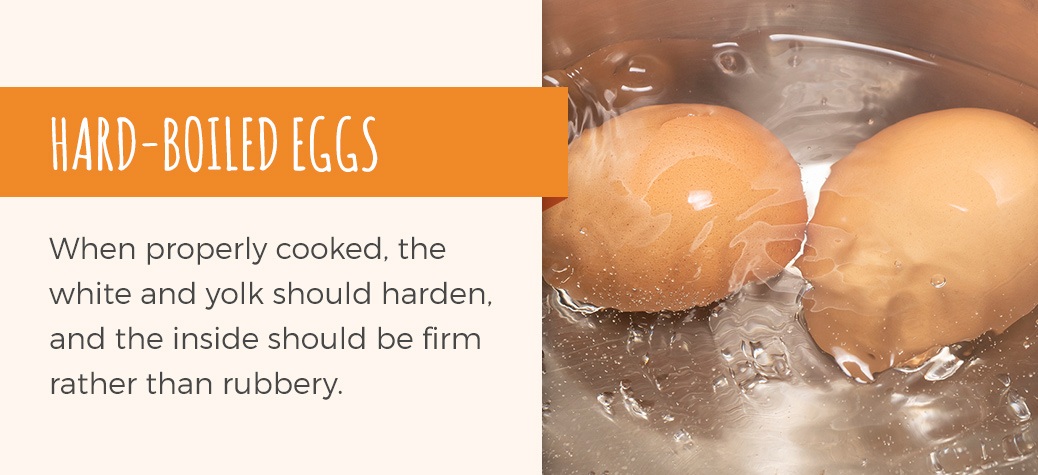
2. Soft-Boiled Eggs
The shell isn’t broken in this method, either, so the entire egg is subjected to boiling. Soft-boiling solidifies the egg white but keeps the yolk tender since they each thicken at different temperatures. To reduce the firmness of the egg, you’ll decrease the boiling time, resulting in analmost jam-like yolk.
Making soft-boiled eggs is remarkably similar to making hard-boiled eggs. Start boiling enough water to submerge the eggs completely, then gently place your eggs in the pot. You’ll leave them to boil for no more than six minutes. Cool off the eggs immediately when the time is up to achieve a soft middle.
The natural membrane from the shell protects the egg for storage, but because the yolk is more vulnerable, they only last a short time. Use them within a week or dig into them on the spot.
3. Hard-Scrambled Eggs
This may come as a shock, but there’s a scale for scrambling. As arguably the easiest way to fix eggs, scrambling splits off into a few categories, and it comes down to the moisture level in the pan. For a hard-scramble, you can leave your eggs without any liquid left. In a totally “done” state, you can judge from a general scan if the pieces are firm instead of runny.
You can crack one egg or several, unloading the contents of the shells into a bowl. Check to see if any fragments of the shell made it into the container. Next, stir the egg with a whisk to combine the egg white and yolk. Heat a skillet, then pour the mixture in. As the egg cooks, use a spatula to stir the egg until all parts are equally stiff.
These pair well with toppings like cheese and chives, or they can stand alone with a light sprinkling of salt and pepper. The leftovers expire after around three to four days in the fridge.
4. Soft-Scrambled Eggs
If hard-scrambled eggs are too dry for you, soft-scrambled may be the solution. These still eliminate the liquid egg, but they retain more moisture for a lighter consistency. Nearly “wet,” soft-scrambled eggs take precise timing.
Just like the previous kind, you should crack and whisk the egg in a bowl, then distribute the blend in a skillet. Turn over sections of the raw egg, but don’t use more movement than necessary so you can maintain a soft texture. Motion can introduce air pockets to release the moisture.
To officially be done, the egg can be gooey and fluffy without holding unsafe liquid. With a side of bacon or atop a slice of toast, soft-scrambled eggs are tasty. Enjoy them immediately, because they don’t retain their quality when reheated.
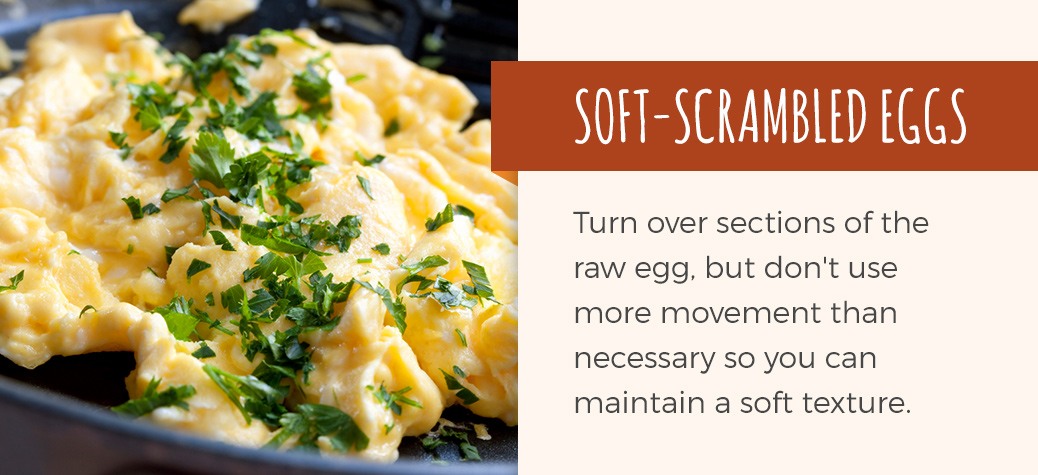
5. Creamy Scrambled Eggs
Creamy scrambled eggs are the perfect way to embrace indulgence at breakfast. A touch of milk and butter can spruce up the traditional egg scramble, but the extra creaminess might give you pause if you’re trying to examine for doneness.
Warm up the butter in the skillet, then merge the fresh eggs with the pools of butter. You can incorporate the milk at different points of the process, but it’s most convenient to do before adding the egg to the skillet.
The trick to detecting a fully done creamy egg is to take the temperature of the eggs. It should reach 160 degrees Fahrenheit. You can also look for run-off that resembles egg rather than butter or milk.
6. Omelets and Frittatas
To construct an omelet, beat an egg and transfer the combo into a pan. Like a pancake, you’ll let it sit, untouched, until the bottom is firm. The top will appear undercooked, but when you fold over the omelet into a semi-circle, it will finish cooking.
Let the omelet reach a condition where it doesn’t jiggle anymore. It can be springy and somewhat moist, but an adequate hold ensures it’s thoroughly cooked. Frittatas are similar, but they aren’t folded. You also have the option of broiling the top of the frittata in the oven.
The determination for doneness in omelets and frittatas is the same as scrambled eggs. If there’s residual liquid from the raw egg, let it sit on the stove for another minute or two. If you’re not sure if the dish is complete, pull out your handy food thermometer. The go-to heat of 160 degrees Fahrenheit applies to these, as well.
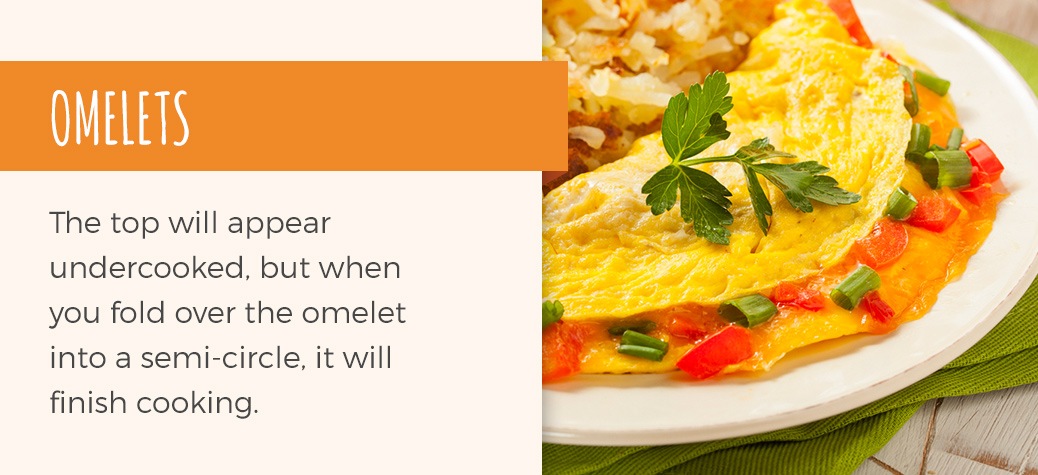
7. Sunny-Side-up Eggs
This egg version adopted a cheery name that makes mornings worthwhile. Sunny-side-up eggs keep the center the soupiest of the different types of egg doneness.
Break an egg into your pan and wait until the edges are crispy. You won’t flip the egg over, but the yolk should cook from the bottom. Once it’s finished, the yolk will “shine” in the center rather than getting covered by the white portion.
Sunny-side-up eggs are suitably done when the yolk is relatively thick but not entirely firm. The yolk fluid can stay runny, as long as the temperature is high enough to kill existing bacteria. While the yolk cooks at 149 to 158 degrees, it’s optimal for it to get to 160 degrees to protect against illness.
8. Over-Easy Eggs
The “over” family of egg cooking methods ranges from over-easy to over-hard. Over-easy tends to resemble sunny-side-up, but with only the white showing since the egg is flipped.
Over-easy eggs are cracked into a pan at a high heat level so the edge becomes brown. Turn over the egg to fry both sides, but only heat the second side for approximately 30 seconds. Quickly slide the egg out of the pain after the white gets solid.
The yolk should flow when you cut into the middle, but it needs to be syrupy and not thin. This demonstrates that the yolk is acceptably cooked. Don’t attempt to store them for a future snack, but serve the over-easy eggs promptly. Grab fresh bread to sop up the yolk for a complete meal.
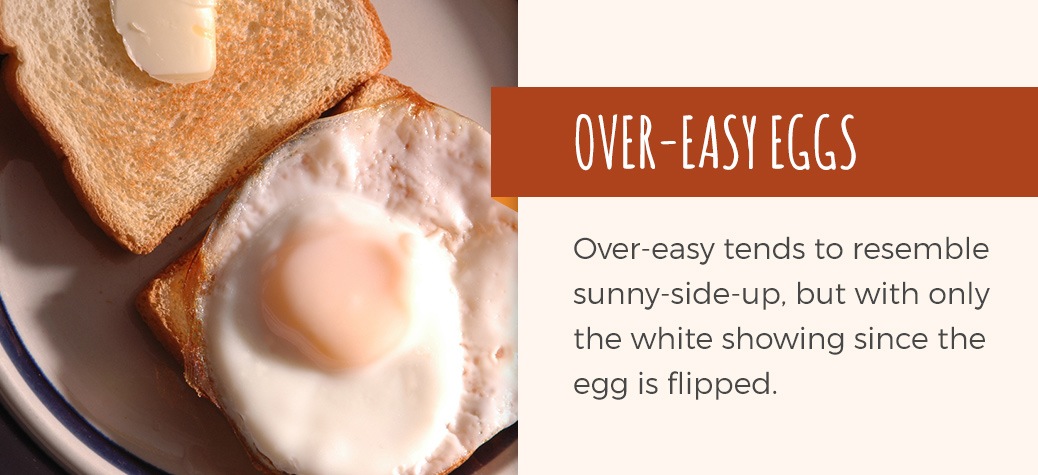
9. Over-Medium Eggs
As the next stage, over-medium eggs are virtually identical to over-easy. However, it produces a more concentrated yolk thickness that’s partially congealed.
Following the steps of over-easy eggs, you can pick up right after you flip it to the second side. The yolk should be unbroken as you delicately lift it with a spatula and lay it on the reverse side. Depending on your stove heat, leave it for around a minute.
The doneness will be equivalent to soft-boiled eggs, and you can tell they’re totally cooked by the set whites and heavier yolk. The creamier yolk gives you a more substantial dipping sauce to enhance your meal, so feel free to gobble it down straight away.
10. Over-Hard Eggs
Ever wonder what are over-hard eggs? While you still flip these eggs over, the yolk of over-hard eggs won’t be soft or liquefied. Over-hard means the egg will be fried flat, but the yolk will be solid.
Perform the same steps as over-easy and over-medium eggs, adding an additional half a minute or more of frying to the second side. You can monitor the progress of the yolk by propping the egg up with a spatula and viewing the bottom.
Many choose to puncture the yolk with a fork or knife to allow the heat to affect the yolk directly. The yolk can be cooked without piercing if you let it sit on the burner long enough, but the edges of the white may burn.
11. Poached Eggs
You might think you need the shell around an egg to boil it, but poached eggs bypass the shell and suspend the egg with a special technique. The egg white becomes sturdy while the yolk is juicy.
Fill a pot with water and a splash of vinegar, then increase the heat so it will boil. The vinegar helps the white of the egg bind around the yolk rather than leaking into the water.
Get a rolling boil going then use a spoon to create a swirl. After the flow is ready in the pot, place a shell-less egg into the middle. The motion restricts the whole egg to the center until it holds together on its own.
You can also put the egg through a strainer or sieve to separate straggling whites from the rest of the egg before dropping it into the pot. Then the rest of the egg naturally remains attached.
Poached eggs should cook for five to six minutes to hit the correct doneness. When they’re ready for eating, they’ll have a firm exterior and a smooth shape due to the free-form boiling.
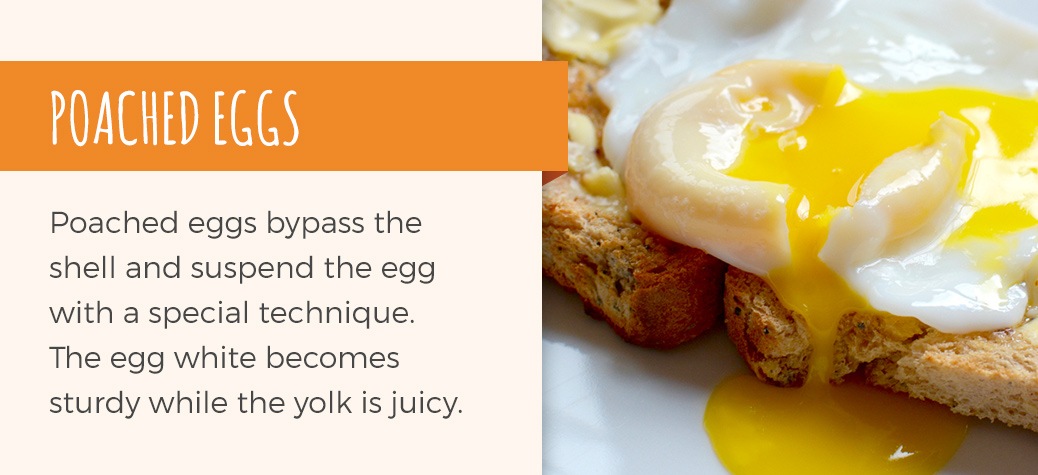
12. Baked Eggs
Up to this point, most of the egg cooking methods have used the stove top, but baked eggs are set apart from the rest because they cook in the oven. In a level dish or tin, an egg is either scrambled to mix with accenting ingredients or left whole.
For the whole yolk version, place an egg in an oven-safe container and put it in the oven for 10 to 15 minutes. A shorter cook time will give you stiff whites over a runny interior while more time will cook all parts of the egg through.
The mixed version seems like a small frittata. When a mixed baked egg is done, you’ll be able to insert a toothpick and pull it out clean. If there are fixings stirred into the mixture, the doneness is reflected in its temperature. This is also the gauge for intact yolk egg bakes.
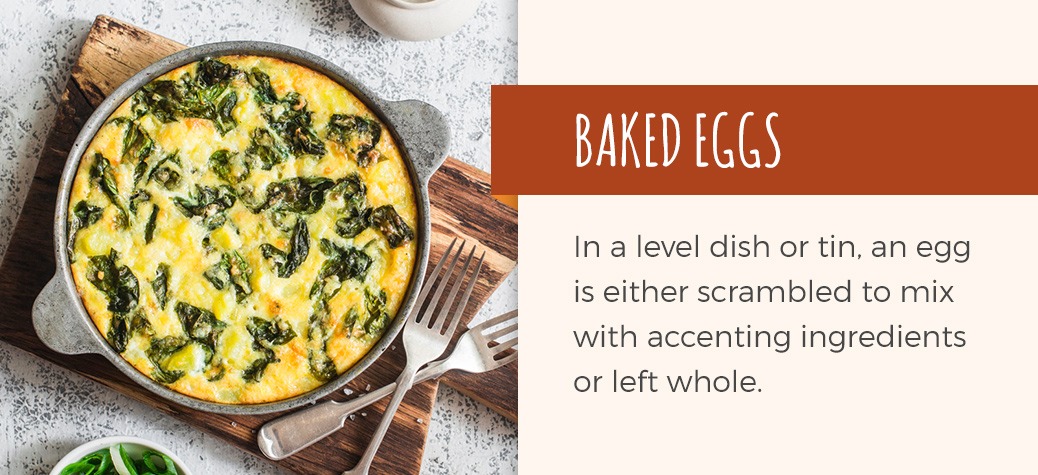
13. Basted Eggs
Basting simultaneously steams and fries eggs so the edges of the egg whites don’t get brown and crispy. With either butter or water, the liquid cooks an egg while it stays in place.
You can melt butter in a pan and set the egg on top. Then repeatedly spoon the melted liquid over the egg. As the butter rolls off, you can continue to ladle the liquid to cook the upper portion. Water-based basting doesn’t require as much involvement. You can insert water in the pan and cap it off with a lid. The steam hardens the top, and the bottom is fried.
Basted eggs look cloudy on the surface after the butter or water has done its job. You can watch it through a clear lid or periodically check in beneath a solid lid. The yolk will be runny when you slice into the egg just like the sunny-side-up style.
How Do You Know If an Egg Is Undercooked?
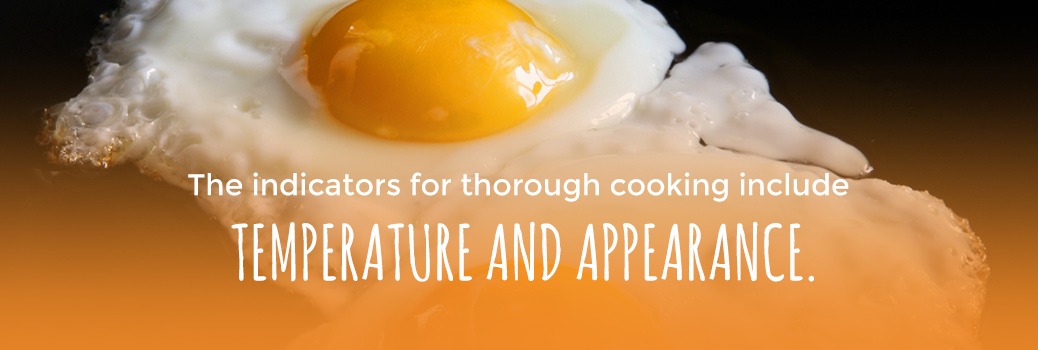
You might be in a rush getting a meal on the table, and you’re uncertain if you achieved the ideal doneness. Spotting an undercooked egg can help you steer clear of Salmonella bacteria and guard your family. The indicators for thorough cooking include temperature and appearance, and your inspection can give you peace of mind before you taste your delectable egg dish.
Enough heat can burn off the infectious bacteria, and eggs should rise to at least 160 degrees Fahrenheit. Insert a trustworthy food thermometer to check your eggs before you serve them. If you didn’t test the eggs while you were fixing them, you can reheat the eggs to this point.
Visual signs like consistency and color can demonstrate the doneness of your food. Liquid in your eggs can also show that your eggs are still raw. Look around for clear, soupy areas in scrambled eggs or omelets. In over-easy, poached or basted eggs, you can examine the membrane between the yolk and white. If it’s wet instead of gel-like, you might need to heat the eggs. When your yolks and whites are firm, they’re safest for eating.
Are Partially Cooked Eggs Safe to Eat?
Certain cooking methods don’t congeal the whole egg, which means they’re technically partially cooked. Eggs like over-easy, poached and sunny-side-up are in this category because of their runny middle. You may think these are the same as undercooked eggs, but there’s a significant difference.
Also, eggnog, salad dressings, and genuine mayonnaise all include raw or lightly cooked egg, but the FDA and CDC don’t ban them. So, why is it fine to eat them?
The difference is that partially cooked eggs reach a suitable temperature instead of falling short. The varieties we discussed aren’t raw, and they meet the expectations for protective measures like pasteurization.
The runny yolk is acceptable to eat as long as the proper precautions are taken. You can choose pasteurized eggs, follow correct steps and monitor the temperature to protect you and your family from sickness. Pasteurized eggs are treated to fend off Salmonella, so they’re ideal to use when you’re choosing one of these light cooking styles.
Find Your Preferred Doneness With Sauder’s Eggs
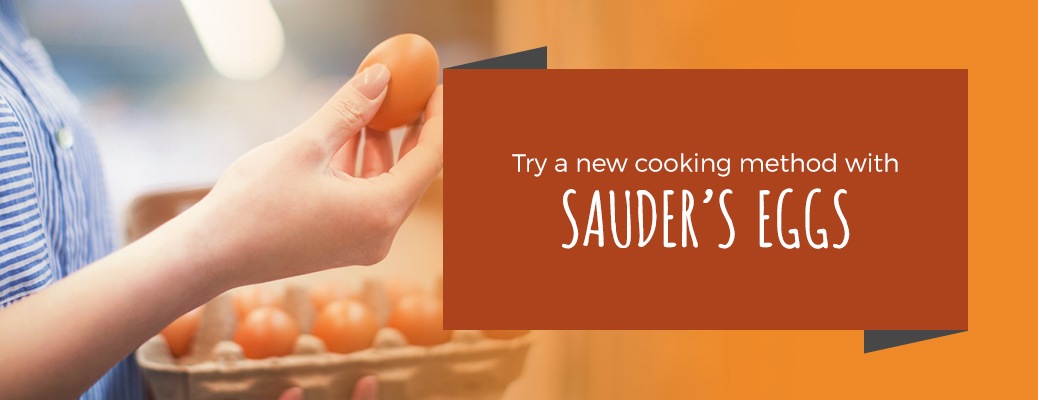
Now that you have some background on egg doneness, you’re one step closer to answering your server with confidence. Next time you hear, “How do you want your eggs?” you’ll know how to pick a tried-and-true option or how to select an adventurous route.
You’ve got a strong handle on the methods, temperature, texture and look that contributes to doneness. At Sauder’s Eggs, we want you to take advantage of your new knowledge and put it to good use.
We care about your family and the products you use during your cooking. Our eggs are exceptional and satisfying, and we are dedicated to sharing them with families like yours. As a family-owned and operated business, Sauder’s Eggs has a commitment to quality that fits seamlessly into your day-to-day needs.
Try a new cooking method to discover an expected favorite, and locate a Sauder’s Eggs near you to get the best eggs for your recipes.
